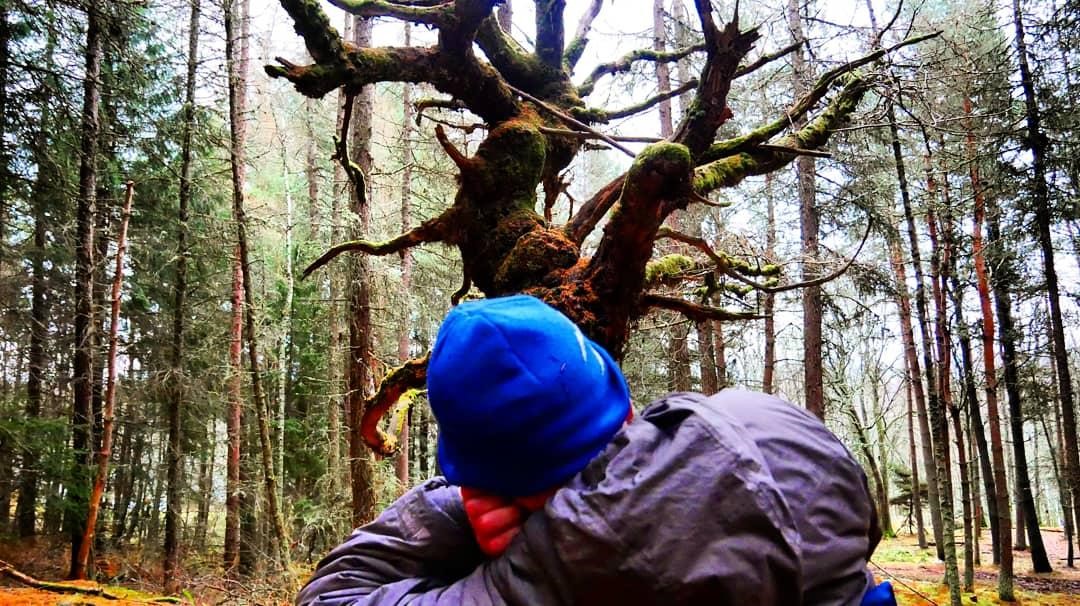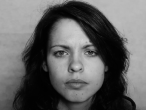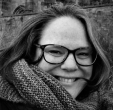
In this post, students and staff on the Outdoor Environmental Education (OEE) Masters’ programmes of study Robbie Nichol Professor of place-based education, Heidi Smith Lecturer of Outdoor Learning, Jack Reed, Charlotte Megret and Catherine Dunn demonstrate the value of the relationships and synergies between digital spaces and outdoor places for higher education…
Great oaks from little acorns grow (Proverb)
In choosing this proverb, we acknowledge the hope it offers for our futures. While it has a strong metaphorical appeal, the Oak we speak of is real and one of us. The actions we speak of are not symbolic but forged in the experiences we shared as a student/staff/Oak learning community as part of Outdoor Environmental Education (OEE) Masters’ programmes of study. Our actions are revealed in different forms of activism in the University and beyond. In this blog we explore the power of place-based experiential learning as an encouragement to identify inequalities in the world, and to do something about them.
Even before Covid there were questions around how Universities might respond to the rise of neoliberalism, massification and monolithic approaches to learning and teaching, and the extent to which Universities were complicit in these processes. We know, or at least we hear, that interdisciplinarity is the future of Higher Education. The argument goes that it is the traditional departmental structures that are preventing learning, teaching and research from evolving. While interdisciplinarity remains for many educators all too often elusive, in outdoor nature you find chemistry, physics, and social studies all bundled together.
What was truly exceptional on the Outdoor Environmental Education Masters programmes was how experiencing a place allowed me to experience connections. As we immersed ourselves into a new place for the course of a week, we experienced the complexity of the world first-hand, everything was intertwined: history, biology, literature, sustainability, politics, languages, geography – the curriculum was written in the landscape (Charlotte Megret).
In their field trip to the Isle of Rum the students produced an image which outlines each field of study undertaken bringing together the social and natural sciences through teaching and learning. The students reported that the experience was truly interdisciplinary and reinforced a realisation of their interconnectedness with the natural world.

In the outdoors, encounters with nature occur with the world as it is and are not required to be discipline specific. In fact, the world, as it is, is already interconnected and in this sense interdisciplinarity is inherent in the way one experiences phenomena outdoors and mirrors that interconnected reality. Furthermore, the interconnectedness of the world outdoors can be experienced in cognitive and affective ways and this is essential for interdisciplinary learning. When we take all learning indoors, fitting it into a curriculum, can result in a breaking up of this interdisciplinarity and interconnectedness. However, polarities such as ‘indoors’ and ‘outdoors’ are often very misleading whereas focusing on the relationships between the opposites makes for better interdisciplinary learning and teaching. Hence our focus on digital spaces and outdoor places, which many would argue are polar opposites, but here we look at their relationships and synergies.
Scholars have begun to refer to issues that are global, large scale, highly abstract, and with far-reaching consequences, as super-wicked problems. From the literature these are understood to include environmental, social, economic and political problems. Sustainability and climate change fall into this category and interconnectedness, within and between the different kinds of problems, represents the primary reference point in order to understand their scope and magnitude. We argue that interdisciplinarity is essential to understand interconnectedness and both terms (interdisciplinarity and interconnectedness) are themselves super wicked-problems as Universities around the world seek to (re)orient their learning, teaching and research to understand better how to live well and act well in the world.
Living well and acting well in the world has a moral dimension in how we as human beings relate to nature. Some time ago David Abram coined the term ‘more-than-human’ to indicate the interconnectedness of the human species with the rest of nature. In doing so he wanted to challenge the power and dominance that humans have over nature by insisting that nature was ‘more-than’ just the human species, since we were, in a sense, just another species, and that to understand this interconnectedness better humankind had to adopt a greater sense of humility in our values, behaviours and practices.
We invite you now to watch our film which was developed to help communicate to others the effect of the oak tree and the deep, visceral experience that it elicited from all of us, staff and students alike. You will then see how the oak ‘followed people around’ and affected their life’s journey.
Click to view film here: https://youtu.be/tHTuY8UBCCE
For the students in this cohort, their experiences of the oak tree, and then a field trip to the Isle of Rum, led to students organising a climate rally, having conversations with the Principal and then the University declaring a climate emergency. When you get people passionate about creating positive change together, it is amazing to witness and experience what is possible. This film was launched and viewed for the first time at the University of Edinburgh’s 2020 Learning and Teaching Conference. We were very moved by the responses we received from the delegates and so we share it here and invite you to share your thoughts and responses with us. We hope you will share the blog and film with others as we keep on working together to create a better world for all.
Note: Students and staff from the Outdoor Environmental Education Masters Programmes at the University of Edinburgh, 2018/19 Cohort. This project was student led and you can learn more about the process on Digital Storytelling in Higher Education.



 Charlotte Megret
Charlotte Megret Jack Reed
Jack Reed Robbie Nicol
Robbie Nicol Heidi Smith
Heidi Smith